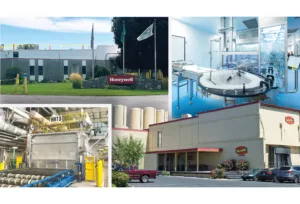
Home » Lumber market to remain sluggish
Lumber market to remain sluggish
December 15, 2011
The wood products industry shows little sign yet of emerging from the protracted slump it has endured, although it could see slight improvement next year.
Spokane-based Potlatch Corp., which has about 1.5 million acres of timberland and also operates mills, has used what it calls "very opportunistic non-strategic land and timber sales" to avoid having to reduce its dividend payments to shareholders over the last several years.
It announced earlier this month, though, as part of a strategic move linked to the continued poor economy, that its board has decided to reduce the company's dividend to $1.24 a year, or 31 cents a quarter, from $2.04, or 51 cents a share, and to lower harvest levels by 15 percent until log demand improves. It said it took the latter action to preserve the long-term value of its timberland holdings.
The company continues to perform strongly, given the industry headwinds it faces. It reported third-quarter net income of $25.6 million, or 63 cents a share, up from $18.1 million, or 45 cents a share, in the year-earlier quarter, but it said earnings for share would have been 12 cents lower if not for a timberland sale of nearly 42,000 for $28.7 million.
"We continue to experience the impact of the weak domestic housing market that is limiting demand for both our logs and manufactured wood products," Chairman, President and CEO Michael Covey said in the company's earnings release.
Meanwhile, Clearwater Paper Corp., the big Spokane-based maker of tissue and paperboard products that Potlatch spun off three years ago, said in its recent quarterly earnings report that it's continuing to focus its energies "on managing expenses in this challenging cost environment."
Nevertheless, it said it expects to see "meaningful contributions" next year from the continued melding of Georgia-based Cellu Tissue Holdings, which it acquired in December 2010, into its operations and from a tissue plant it's developing in Shelby, N.C.
It reported third-quarter net income of $8.6 million, down from $15 million in the year-earlier quarter, but said it had record quarterly net sales of $501 million, which it attributed largely to the Cellu Tissue acquisition.
Shawn Church, editor of Random Lengths, a Eugene, Ore., publication that tracks lumber prices, says he expects wood product industry revenues next year to be the same as this year or slightly improved.
That's based partly, he says, on a new survey of the wood-products retail industry nationally in which 40 percent of respondents said they expected to see some gains, while 47 percent predicted flat growth and 13 percent said they expect to see further declines.
"There's a tremendous amount of uncertainty, economically and geopolitically, and that all weighs on the outlook, too," Church says.
He adds, though, "I think the survivors in this industry are a little case-hardened in dealing with it. They're running lean and mean and just slugging it out in really hard times. We're hopeful that the worst of it is past us."
Random Lengths' reported the composite price for framing lumber has averaged $273 per thousand board feet through the first 11 months of this year. That was down from a full-year annual average of $284 in 2010, but up from $222 in 2009. By comparison, for most of the previous 10 years or so, the composite price per thousand board feet of framing lumber ranged between around $310 and $420.
Random Lengths' composite price per thousand square feet of structural panel also declined, averaging $290 through November, down from $324 in 2010 but up from $259 in 2009 and on par with 2008. Again, though, those figures are down from the peak years of 2003 through 2005, when prices for that much structural panel ranged from $367 to $462.
Latest News
Related Articles



_web.webp?t=1764835652)